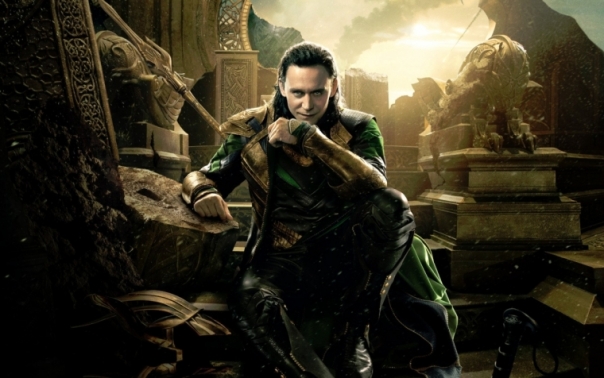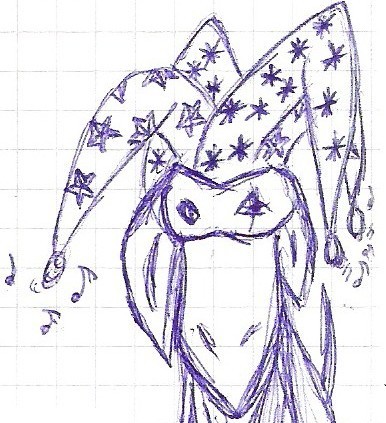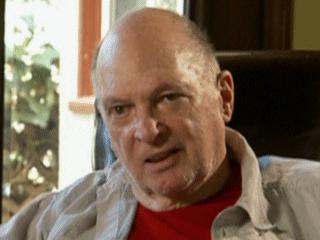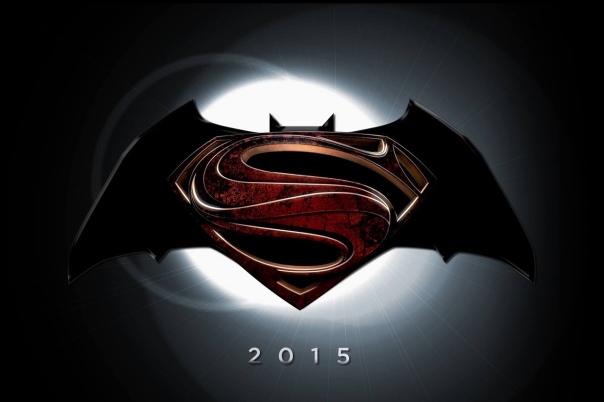Blog Archives
Loki ‘The Vice:’ Marvel’s Thor Goes Judeo-Christian
Journey Into Marvel – Part 80
A building rising in the air and then vanishing! People losing their memory for no physical reason! It smacks of supernatural mischief…and that smacks of the god of evil, my old enemy…Loki!

The Movies don’t even try and pretend… Milton could see the similarities. (Joke only works if you get that JM was blind)
Extremites, like most western fiction the comic’s roots lie in campfire stories. Religious stories, mythologies, and legends all descend from these roots. One of the recurring archetypes that comes out of these traditions is the vice character. I have brought him up before in this series; think Satan or any crux character that coaxes the hero to act against his or her nature. Thor, based out of Norse myth, is the closest Marvel line to these roots. It’s right that his line has the strongest and most obvious vice character in Loki. Read the rest of this entry
A Rundown of Batman at Comic-Con
In the past week, my Twitter feed has exploded. So has my Facebook Home Page. Between the announcements of the new Marvel movies, the new King Kong, an upcoming Godzilla sequel, and prejudice against the new Wonder Woman, it feels like something new has been popping up every hour, and each time, it’s simultaneously the most brilliant invention of mankind and the ushering in of the apocalypse. Funny how that works.
The ones I’ve been keeping my eye on, though, have been the talks about Batman V. Superman: Dawn of Justice. And the more I see about it, the more I think it’s going to be more or less a loose adaptation of Frank Miller’s The Dark Knight Returns, and the more I think it’s going to be awesome.
‘Arrow’ finale recap: The hero this city deserves
As I said on my Twitter last night, I am surprised they could make a Green Arrow adaptation so damned good. I wish they could apply some of this talent to the waining properties like Superman and Batman.
Related articles
The Extremis Review Welcomes PoiSonPaiNter to Our Roster
The Extremis Review welcomes PoiSonPaiNter as a monthly contributor. Take a look at her interests and what she can bring to Extremis.
 PoiSonPaiNter tries to work her creativity into written words through blogging about random stuff (including movie/book and concert/festival reviews) on her own Blog or through writing stories like the book she’s co-writing (More information here).
PoiSonPaiNter tries to work her creativity into written words through blogging about random stuff (including movie/book and concert/festival reviews) on her own Blog or through writing stories like the book she’s co-writing (More information here).
Her early interest in Fairy Tales turned into a fascination for Myths and Legends of all kinds, but also a liking for everything Fantasy-related. A similar path was taken from (Disney) Cartoons and Anime to (Web) Comics and other nerdy things: X-Men, Spiderman, Buffy, and Doctor Who. You name it and Poison has either looked into it or has it already on her list. Oddly enough, while bats are amongst her favourite animals, she doesn’t like Batman; or DC characters. She is more of a Marvel-person.
Poison considers herself to be a Metalhead and therefore belongs to a different kind of Dark Side (without former knowledge of the involved cookies, but ever grateful when they are served), but regardless of all the above still certified to ask: “Have you tried turning it off and on again?”
Related articles
Lorenzo Semple, JR: Honouring a Batman Pioneer
 Recently Batfans mourned a great loss. Lorenzo Semple, Jr., co-creator of the ‘60s Batman television show and writer of the 1966 feature film script, died last week of natural causes. He was 91.
Recently Batfans mourned a great loss. Lorenzo Semple, Jr., co-creator of the ‘60s Batman television show and writer of the 1966 feature film script, died last week of natural causes. He was 91.
A lot of bandwagon fans (aka, people who only care about Batman because of Christopher Nolan, don’t read the comics, or even think about Batman, really) are probably going to roll their eyes right now. “The ‘60s Batman show was stupid! We want to pretend it never existed!”
Yeahno.
I won’t fault you for not watching the ‘60s Batman, but you can’t deny that it was important for bringing us where we are now. I’ve been a pretty happy guy this year, seeing the plethora of superhero movies that are coming out of Hollywood. For the first time in years a Justice League film could actually be realistic, and DC has just announced that they’re going to throw out a slew of films of their own (remember that Ben Affleck has been signed on as Batman for, you know, 37 films or something). We’re in a great place for superheroes on film. Not just with movies, either. Superhero television shows are making a comeback too, with Arrow receiving huge success, not to mention whispers of a coming Flash series (who’d have thought that wasn’t laughable). But we didn’t get there overnight. It started with Batman.
At the time, doing a comic book TV show, as well as a comic book movie, was completely new. The first Superman movie didn’t come out until 1978, and the Hulk TV series didn’t come along until that same year. There had been a Superman TV series in the ‘50s, but generally speaking, this was still very new territory. So give the guy a break. Of course there was some “Bif! Bam! Pow!” Of course there were ridiculous puns by Robin and an awkward Batman costume and an over-the-top Catwoman that walks like she has to pee. It was the first time venturing into the territory. You have to appreciate it for what it is—a groundbreaking.
But, inevitably, someone will assume that it’s inaccurate, and an abomination to the comics. Granted, if you’ve read Scott Snyder’s work in the New 52 and Frank Miller’s graphic novels (not to mention Year One), it certainly seems that way. That’s not actually the case, though.
Let’s take a step back. Most modern popular comics (especially Marvel) started around the ‘60s. Batman, and Superman, as a matter of fact, go back farther than that. Batman started in 1940, right on the heels of the Great Depression. The original Batman comics (which, yes, I have read) are not at all like dark, grim tales of Frank Miller and Scott Snyder. They were bright, colorful, and light-hearted. One of the earliest tales depicted Batman and Robin taking on a group of crooks disguised as old-fashioned swashbuckling pirates! More than once, Batman turns to the page to give the reading youth a lecture on the cowardice of criminals and the nobility of crime-fighting. The old comics were cheesy, dorky, and bit awkward at times (the corny kind, not the sleazy kind). The show fit that mold.
As a disclaimer, that doesn’t mean that I’m okay with the Clooney-headlined Batman & Robin. Nipples on the Batsuit still make me shudder. That was definitely a step backward. Or a leap. Or an H-bomb on the entire fandom.
So we should thank Semple for his work. He was a pioneer into the unchartered waters of comic book adaptations, and without his work, we likely would not have the half-trillion current and upcoming superhero films that all of us nerds are so thrilled about. Rest in peace, Lorenzo. We will remember you.~ Logan Judy, Extremis Batman Contributor.
Related articles
Batman Vs Superman Bows Out of the 2015 Bloodbath
This is interesting. Perhaps, it means that WB is hesitant about its film. After the lacklustre (in my opinion misguided) luke warm response to Man of Steel, perhaps they are feeling the strain and don’t want to compete with the tried and true Avengers.
Read on, my Extremites!
Related articles
View original post 83 more words
Is Marvel’s Thor a Better Written Superman?
By: Julian Munds
Superman is considered the very first proper superhero. He debuted in 1938, as a creation of DC, and forever changed the comic book. His debut forced the medium to change its focus from violent guignolesque tales of horror to larger then life stories about beings with extraordinary skills. Superman was, and still is, very much an infallible character, meaning that he is a beacon of good, who is almost omnipotent and above reproach. He has even defied death. Though Superman is the be all and end all of superheroes, and I am the first to defend his importance to any comic book nerd out there who refutes that claim, his character is, at its core, uninteresting. Countless writers have had difficulty reconciling his seemingly golden sensibilities with the modern need for edge and mortality. Zack Snyder‘s version might have been the best attempt, thus far, at doing this. However there is no need to wrestle with this problem. There exists already a realist version of Superman. He carries a hammer and hails from Asgard.
Thor is the better version of Superman for he is more authentically human.
I am sure you are now squealing: how is Thor, a confirmed god, more human then a adoptive alien raised since infancy by two Kansas farmers?
I am using the word ‘humanity’ to describe his reality. Humans exist by adhering to certain physical laws: the law of gravity, humans need to breathe, they need to eat
and so forth. In his debut, which is what I am reading today, it is established that Thor uses his supreme strength to twirl Mjolnir (his hammer) and slingshot it into the air. He then wraps the hammer’s thong around his wrist which allows the force from his throw to carry him into the air giving him what seems to be the power of flight. In physical terms this is more properly called ‘guided thrust;’ a term I am borrowing from Stan Lee himself. Superman, however, just flies. It is never described how, but is just accepted. Thor must live by physical laws giving him natural obstacles that he must overcome and therefore, he is not omnipotent. Superman circumvents those laws and sometimes outright breaks them.
Both of these characters have an important relationship with their alter egos; Thor’s being Don Blake and Superman’s being Clark Kent. Don Blake is a human doctor who becomes his Asgardian alter-ego by picking up a stick which through contact morphs into the mighty hammer Mjolnir. I am not interested in later retconning which established that Don Blake is actually Thor the whole time, Mjolnir or no, I am purely dealing with his first Silver Age appearances. In this time, Don and Thor are two sides of the same coin not just an alias.
Clark Kent however is an alias. Superman or Kal-El is always his Kryptonian self, glasses or no. Because of this trope, Superman stories always end up being about an alien pretending to be human. This gives him a slightly sinister edge, and an edge that was wonderfully investigated by Snyder.(The idea that Superman’s powers are more suited to a villain is further explored through Alan Moore’s Doctor Manhattan in the Hugo Award winning Watchmen).
Because of Stan Lee’s establishment of Don Blake as a human, and a crippled one at that, who is dealing with a new found power; Stan creates a human connection with, what has been up until this point, an incomprehensible archetype.
Superman’s incomprehensibility is the crux of his character. The normal mortal can’t ever fathom just how powerful he is. Superman is able to change weather patterns, tidal forces, and in a movie, even turn back time. He also famously is the first non supernatural character in comics to literally defy death itself. He is, in short, divine.
I am sure this will not be news to you that Superman is often compared to the christ figure archetype. The comparison is obvious: a young boy from a world of incomprehension sent to Earth, by his father, to be raised by a surrogate human family to one day become the saviour of the human race.
You’d have to be ignorantly blind not to see the similarities. This maybe the reason the legend of Superman has oft been so difficult to adapt in the modern Agnostic/Atheistic world. There are just too many questions and components of his character which relies on faith. Indeed, you could say that the legend of Superman is far more important then the character himself.
What about Thor’s divinity?
This issue sets up Thor, not as a character that is godlike, but one that is literally a god. A god who lives by rules. Thor doesn’t have a need to save the human race. He possesses no compulsion to uphold the greater human good.
In Don Blake’s first fight with the Kronans (retcon: at this point they were known as Saturnian Stonemen) he fights them not out of a higher need to save the human race, but out of a need to save himself (and, a little bit out of an intrinsic joy of battle). Thor is selfish. Yes, he cares what happens to Earth, but he is more interested in his own survival. This selfishness subverts the holier then thou motives of Superman.
Though Thor’s debut changed the face of comics, I do not mean to claim this first 14 page appearance conveyed all these subversions. Some of these observations that have been made are retroactive. As you well know, dear Extremis reader, I have read quite a bit of early Thor appearances.
Having read about a year’s worth of appearances I have begun to grasp just how much like Superman he is. This similarity is further shown through the ‘will they wont they’ vibe Don has with Jane, which is just like Clark and Lois. Thor is also haunted by the mistakes and villainy of his kind. Compare Loki with Zod, you’ll see the similarities. The Asgardian also struggles with his own type of Kryptonite. Don needs his hammer to remain powerful.
When he puts it down he becomes mortal again. Likewise, Superman is rendered mortal by encountering minerals from his destroyed home world.
I could go on for pages and pages about the similarities and subversions of these two characters, but at the end of the day, this is supposed to be a simple review. The issue that I have been referring to is extraordinarily simple. Very little goes on in it aside from describing how Don Blake becomes Thor. There is a minor battle with faceless stone aliens but, frankly, there are very few panels devoted to it.
Much like the Fantastic Four is a parodic Justice League, Thor is a parodic Superman. He is the beginning of a movement in comics, that started during this period, whose goal was to steer the medium from relying on archetypes to realism.
How hilarious that it took an actual god to point out the issues with a pretender god.
Story I Read: “The Stone Men From Saturn” (Journey Into Mystery #83 Aug 1962)
Rating: 3 out of 5
Pros: Don Blake’s haphazard and hilarious back story. The simplicity and thoroughness of character creation.
Cons: The pointlessness of the Kronan conflict.
Previous Review: “Spider-Man” (The Amazing Fantasy #15 Aug. 1962)
Upcoming Review: “Banished to Outer Space/The Magician” (The Incredible Hulk #3 Sept. 1962)
Related articles
- Why ‘Man of Steel’ is the Best Superhero Movie of 2013 (screenrant.com)
- Still troubled by flying Superman, Stan Lee backs Thor’s method (robot6.comicbookresources.com)
- Comic writer Bill Messner-Loebs has fond memories of “Thor” (macombdaily.com)
- Jason Momoa to star in the forthcoming Superman vs Batman film (telegraph.co.uk)
- Superman and Clark Kent (coriew.wordpress.com)
Stan Lee to be a part of TEDxGateway for the first time in Mumbai
Did you know Stan Lee created an Indian superhero? I didn’t and he’s to discuss it at TEDX.
Marvel films: Why bad guys should go good
I think if you look at those characters, you will notice that the majority have not been adapted from their comic book counterparts, in fact some have been created inspire of. As you well know the comics present three dimensional characters. In many cases, these cinematic creations are bastardized simplistic adaptations. Whiplash for example was an amalgamation of two characters. The Mandarin was similar in name only.
I, must say, there should be a greater attempt at adapting the source material rather then creating something new. This perspective killed the first Batman franchise, nearly destroyed Superman and has put asunder many others, Daredevil comes to mind. (It was not Afflecks fault that movie failed.) When looking to actual characters that utilized the source material to their advantage we find detailed portrayals. Ledger’s Joker comes to mind and also Otto Octavius in Spider-Man 2, and obviously, Magneto. Your assessment of Loki is a tad subjective. Tom Hiddleston is known to be quite the fan. Though sometimes he deals with very poor writing, some of his stuff in Dark World was less then stellar, he usually cranks out a balanced performance informed by Loki’s need to be vindicated by his adoptive father. But he’s a diamond in the rough.
Related articles
- Loki Is The Only Good Villain In Marvel Movies– And That’s A Big Problem (cinemablend.com)
- Loki to be bisexual and occasionally a woman in Agent of Asgard (metro.co.uk)
- Tom Hiddleston wanted to play Thor, not Loki – video (digitalspy.co.uk)
- Tom Hiddleston Would Pick Lady Sif to Play Female Loki (screenrant.com)
Despite working with decades of material, the Marvel film continuity is – so far – almost void of bad guys who are anything but, well, bad. While cardboard, power-hungry world destroyers can be fun, they certainly aren’t enough to carry the antagonistic side of an entire franchise.
View original post 1,091 more words
Stan Lee Shares Why Thor is a Better Character Then Superman
I agree. Superman always frustrated me with his ability to fly. Scientifically, if Thor was inordinately strong he could hypothetically fly using this method. Congratulations Stan you are correct on this. I knew there was a reason why I didn’t like Superman.
Related articles
- Thor’s Flight – Stan’s Rants (jedimouseketeer.com)
- Stan Lee On Why He Doesn’t Like Superman (comicbookmovie.com)
































